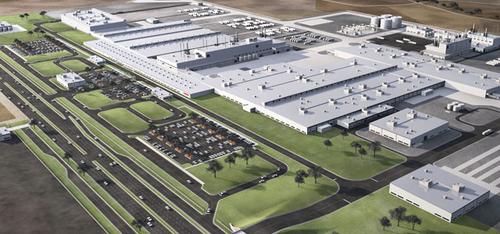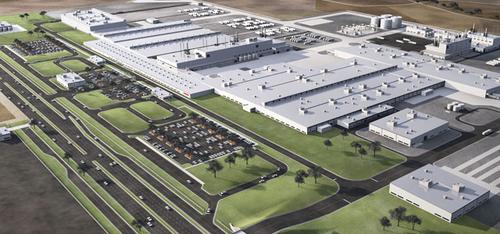August 2, 2016

In writing about automation and control for Design News over the last decade, one topic that has been a consistent focus is the energy efficiency of industrial plants. For years, energy usage was not even a major design priority for machinery and equipment suppliers but, with rising costs and concerns, it suddenly became a hot engineering topic.
It's amazing to see a recent news report from ABB that an array of technology solutions has improved energy efficiency in Renault-Nissan and Daimler's new Mexican car factory by up to 20%. Starting from the ground up in building a new plant and optimizing energy system performance in a more complete way definitely helps drive savings, but the overall achievement is still impressive by any measure.
COMPAS (Cooperation Manufacturing Plant Aguascalientes)
In looking at strategies for optimizing energy usage, it has always been apparent that solutions would need to include both high-performance, energy-efficient components and strong system-level thinking/implementation.
State-of-the-art, energy-efficient, low-voltage power distribution solutions are the key pieces to the reductions in usage at the Renault-Nissan and Daimler's joint venture manufacturing facilities located in Aguascalientes, Mexico. But the new technologies deployed in the facility range from low-voltage switchgear, motor-controllers, electrical panels and automated lighting systems to power the factory's entire electrical system.

"Now more than ever, energy efficiency is a major factor not only in our end product, but also all along our value chain," Ryoji Kurosawa, COMPAS CEO stated in a recent press release.
One technology used in the project is ABB's Emax 2, which the company claims is the world's first combined circuit breaker and power manager, and uses 25% less copper than traditional circuit breakers.
The breaker both protects electrical circuits and reduces energy consumption based on the user's needs, leading to significant reductions in energy waste. The design of the breaker uses a protection trip relay along with an integrated power controller to measure and evaluate energy consumption, managing the loads to maintain or reduce the peak power usage. Embedded multimeters provide an effective way to gather accurate measurements -- to 0.5% for voltage, 1% for current, and 2% for power to monitor equipment performance even from afar.
READ RELATED ARTICLES ON DESIGN NEWS:
Other technology solutions used in the plant include ABB's Tmax Link distribution boards, the TVOC-2 arc guard system which reduces the negative consequences of an arc accident to a minimum. Motor-control centers are integrated through System pro E power technology to protect personnel against electrical short circuits and to keep the system running with maximum efficiency and minimum maintenance and downtime.
An automated lighting solution uses the ABB i-bus KNX intelligent installation system for building control applications based on KNX technology. The technology is supported by a wide range of building controllers (lighting, sun protection, heating, ventilation, and air conditioning) and intelligent networks that contribute significantly to the optimization of energy consumption, simplification of building monitoring and maintenance.
KNW technology offers a decentralized, programmable bus system that can be implemented in both residential and non-residential buildings. You can read more about the technology on the ABB website, even though according to the site the products are not available through distribution in the US yet.
Al Presher is a veteran contributing writer for Design News, covering automation and control, motion control, power transmission, robotics, and fluid power.
About the Author(s)
You May Also Like





